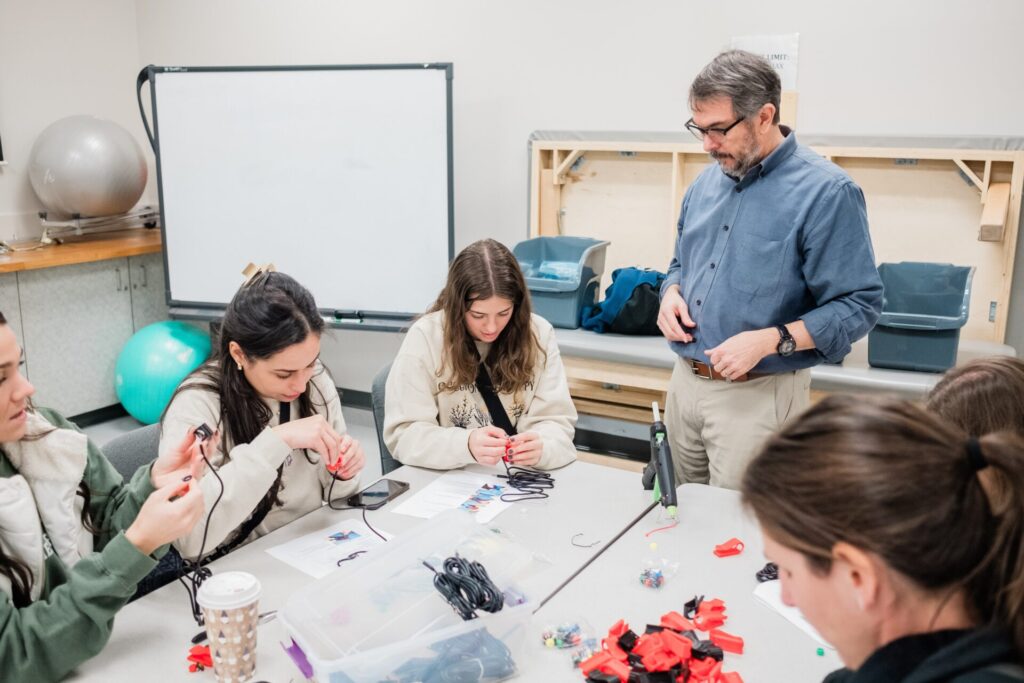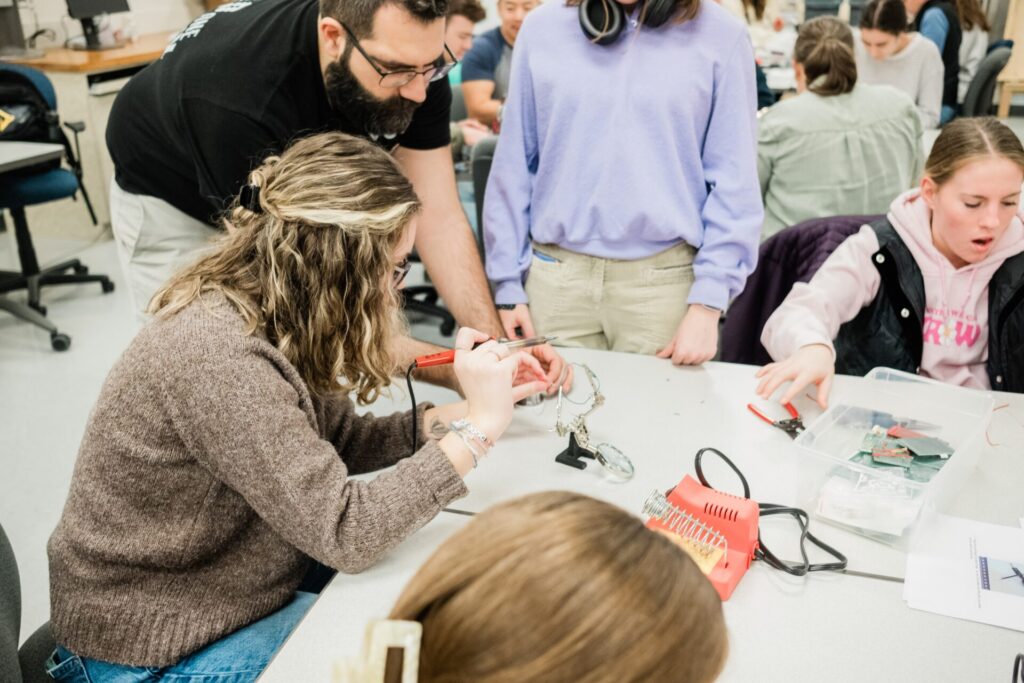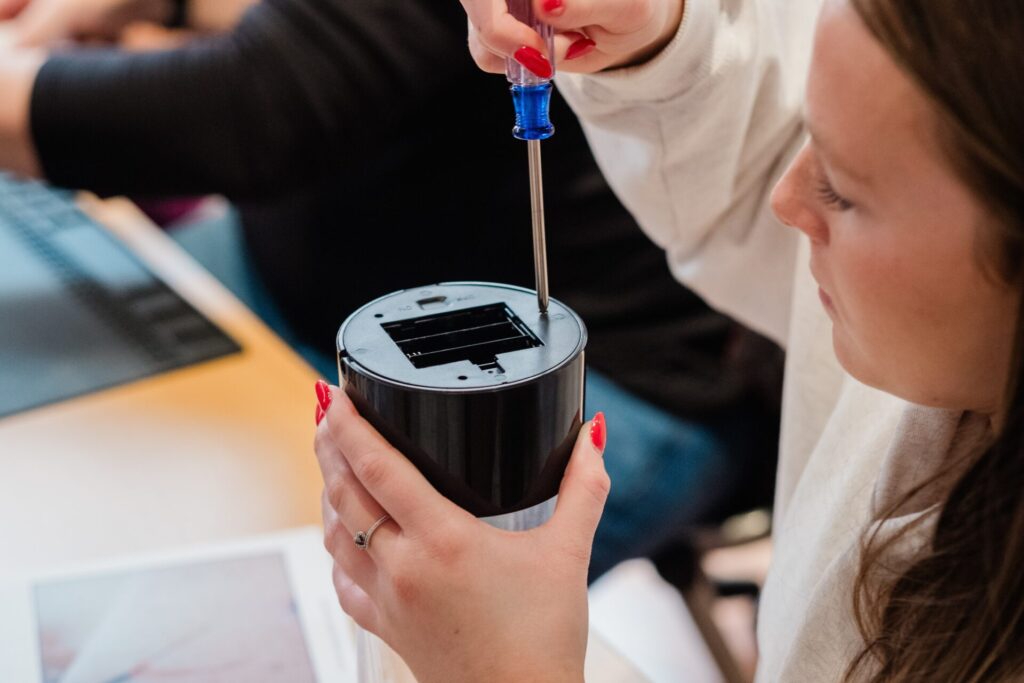In Pittsburgh, the technology and education communities are breaking new ground by creating and adapting all kinds of equipment to support learners with disabilities. We’ve asked Alexander Geht, founder and CEO of TESTA and coordinator of 412 Ability Tech, and Scott Dougherty, assistive technology specialist at the Allegheny Intermediate Unit, to tell us what this innovative work is all about and where it’s headed.
Remake Learning: What is assistive technology and what does it look like in a learning context?
Geht: “It’s any kind of technology that assists people who have some kind of special needs or disabilities. In education, it has very broad applications: For physical disabilities, it’s everything from equipment that helps them to hold a pen or sit better to more accessible reading devices. Visual assistive technology is a huge portion of the education applications to help children to read better or audio systems that help children to read books.”
Remake Learning: What new ideas, tools and/or opportunities are shaping the future of assistive technology for learning?
Geht: “The Tikkun Olam Makers (TOM) community focuses on creating new products that in most cases are not developed by technology companies. This community creates them, then uploads the product information to the network, so that anyone can download all the instructions to 3D print them or make them. For the TOM “Hack the Toy” event we did on Dec. 2, the TOM fellows from Duquesne and other universities adapted toys to make them accessible by adding switches and other things during a “building party.” By creating together with the community, they were also teaching the community how to make these kinds of toys. And then we are donating the toys. So it’s many levels of educating others and helping others.”

Remake Learning: How are educators and technologists in Pittsburgh pushing assistive technology to the next level, and what does this progress mean for educational equity and opportunity?
Dougherty: “We started off a couple of years ago by doing events like “Hack the Toy” to show teachers and occupational therapists how to solder, toy adapt, make switches, and just to raise awareness. Teachers working with students with complex bodies certainly know the types of things that are out there. But our effort was really to expand that knowledge base to all the teachers in the building, particularly in STEM and robotics programs in high schools and colleges.
At my very first workshop, it was teachers in special education programs. But we started to recognize that there are many clubs out there with kids learning these technology skills. And if they learn about this, they’ve got potential fields to go into that go beyond coding and electrical engineering for big corporations. You can be meeting human needs, right in your own community. So what we’re moving toward now. And the ecosystem (412 Ability Tech) is expanding awareness of the possibilities out there to help other human beings with the skills that you have. Students who are in occupational therapy programs or engineering programs here at the local universities are using their skill set to address the needs of a special education population, but also learning how those skills can be applied to a healthcare setting, in a higher education setting and the K-to-12 education setting. So it expands the workforce options into fields such as physical or occupational therapy and biomedical or rehabilitation engineering.”
Geht: “It’s unique that we are connecting the technology community and the education system – using the students in schools and universities, who will create and collaborate with the disabled person, and also bridge this gap of bringing the equipment to the market. Working with the IU, it’s a really great opportunity to make these kinds of different connections. We have schools and universities that have makerspaces. So we can utilize the makerspaces to make these kinds of assistive technologies part of the educational process for technology students, and then donate the products that were developed to the people who need them and maybe cannot afford to buy them or did not know about them.”

Remake Learning: At the moment, what challenges or obstacles stand in the way of assistive technology advancement?
Geht: “In the education system, there is a huge gap between what children could get and what they actually have. Sometimes it’s a lack of financial resources. There are very small markets for these things and custom products can be expensive. Sometimes it’s the education system having no knowledge that this equipment exists. Many people need these products, but in most cases the healthcare system will not create them and the market will not create them. It’s only the community that will improvise and create them, using the students and schools and universities. So we are trying to get all the educational programs involved in this work.”
Dougherty: “On the side of designers, there’s still not enough thought about the whole variety of users that are out there. As people are looking at designing products and designing spaces, accommodation and accessibility aren’t necessarily the top of the list – particularly you see that with web-based tools and coding. They know what product they want to create and what they want it to do, but they don’t think, ‘Are there other ways to access that?’ If you’ve got somebody who’s blind, for example, how are they going to approach it? Somebody who had a stroke and lost facility in their limbs, how would they interact with your product, enter your building or use your space? So while we’ve made a lot of gains in commercial products and spaces, I think still on the design end we’re facing some barriers that are built into products and are still a little hard to overcome.
Events like “Hack the Toy” and what Remake Learning has been doing, what ecosystems do, are raising awareness. And then when you’re designing something, you’re thinking about the widest range of people being able to utilize it. That’s where equity comes in: If we’re designing our spaces, our interactions and our materials with access in mind, then assistive technology is not a major hurdle. There’s a tool, so that now the student can take this class or go into this career path and the assistive technology tools are there to support that. So I think that’s improving, maybe. The barriers we have are ones we didn’t avoid through better design, because we weren’t thinking ‘Oh, that’s a barrier.’ But we can design to avoid them and that’s where we’re heading.”
Authored by

Melissa Rayworth
Melissa Rayworth has spent two decades writing about the building blocks of modern life — how we design our homes, raise our children and care for elderly family members, how we interact with pop culture in our marketing-saturated society, and how our culture tackles (and avoids) issues of social justice and the environment.
